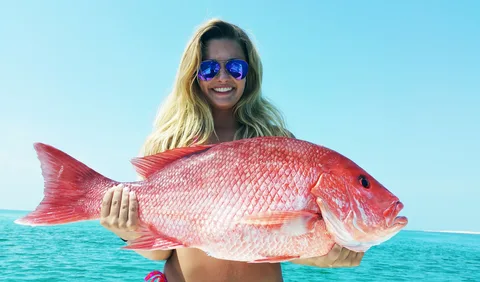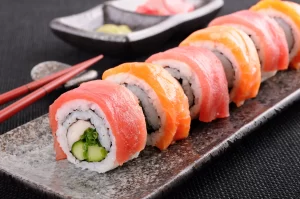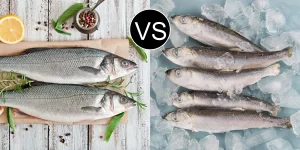Fishing is not a traditional practice, but it’s a way of life and eating routine for many people worldwide. Red snapper is popular for its amazing flavor, good texture, and richness.
Since the much-in-demand species place more demands each day, however, proper management of the fishery matters more and more. This amazing guide will take you through how to carry out sustainable red snapper fishing, why, and how to maintain a healthy oceanic environment.
How Sustain Fishing Is Beneficial
Sustain fishing has a fishing technique that can never harm fish populations and habitats. Harvesting fish in a manner and amount that never disturbs populations to replenish and harvest fewer from the sea creatures is sustainable fishing.
Moreover, sustain fishing techniques keep ocean ecosystems balanced in a manner that generations yet to come will be able to fish and consume fish.
Demand of The Red Snapper
The red snapper (Lutjanus campechanus) is a vibrant, colorful fish of tropical oceans like the Gulf of Mexico and the Southeastern United States. Red snapper is most famous for its tender white flesh and high culinary diversity. It’s also extensively used in many dishes, including grilled fillets and fish tacos. Red snapper has been gravely affected by overfishing, habitat loss, and ecosystem degradation.
To that end, there is a pressing need to harvest red snapper fisheries in a sustainable manner. Harvesting sustainably, maybe we can save red snapper even in the future and save the ocean ecosystem.
Current Scenario of Red Snapper Fishing
Red snappers have previously been overfished. Unchecked overfishing leads to previous peak demand. Conservation recently took effect as a measure to keep red snappers in a stable condition. Steps have been taken to avoid catching the juvenile fish and allow the population to recover once more, such as by restricting catches and sizes.
In spite of all this, there are problems. Red snapper stocks also suffer from problems owing to climate change, habitat destruction, and illegal fishing. There must be adoption of sustainable practices in dealing with such problems as well as keeping fish stocks healthy.
Sustainable Red Snapper Fishing Practices
Some of the most important practices that can be applied in efforts toward red snapper fishing being sustainable include:
1. Obey Guidelines and Regulations
Fishers have to follow local regulations that include seasonal catch limits, size limits, and types of fish for taking. They are meant to ensure future supplies of healthy fish. Always refer to the regulations of your region for guidance prior to going out to fish.
2. Practice Selective Fishing Gear
The use of tackle specific to one species decreases bycatch or the catching of non-target species. Circle hooks, for example, minimize the chances of catching unwanted fish so that they may be released alive.
3. Think Catch and Release
If you are fishing recreationally and not for food, do catch and release. This way, you can have fun fishing without taking fish off the market. Handle fish carefully and release them as soon as possible in an attempt to provide them with the best chance to survive.
4. Practice Sustainable Seafood Practices
Choose to buy fish from sustainably certified producers. Look for products with third-party certifications like the Marine Stewardship Council (MSC) or the Aquaculture Stewardship Council (ASC) when purchasing fish from stores or restaurants. This enables fisheries to engage in responsible fishing.
5. Exercise Habitat Restoration
Most firms participate in the rehabilitation of ocean creatures like mangroves and coral reefs. Sponsorship or participation in the same will assist in resettling the inhabitants of red snapper and other organisms they depend on to reproduce and survive.
Why Sustainable Fishing Is Important
Sustainable red snapper fishing is vital on the basis of a number of factors:
1. Environmental Health
Sustainable behavior does not harm marine ecosystems, and hence, different species can acclimatize. Sound ecosystems provide beneficial services, i.e., water purification, nutrient cycling, and habitat provision to other sea creatures.
2. Food Security
Fisheries provide protein to millions of individuals around the world. Sustainable fishing enables us to keep fish for the current and future generations. Proper management of fish can help us ensure that individuals who depend on fish as a means of survival are blessed with food security.
3. Economic Stability
Sustainable fisheries will ensure economic sustainability because they will be capable of earning long-term revenue without exploiting the resource. Healthy fish stock can also lead to healthier fishing expeditions, which will create more tourism and economic activities in the region.
4. Ethical Responsibility
Since we are guardians of the planet, we need to preserve its resources. One form of respecting the water creatures and making sure we do not ruin the coming generations is through sustainable fishing. It shows that we can be able to exploit the natural element of fishing without neglecting to take responsibility for our footprint.
5. Climate Change Mitigation
Overfishing and habitat loss also intensify the impacts of climate change. Through promoting sustainable fishing, we enhance the resilience of marine ecosystems and reduce the impacts of climate change.
Taking Action
As a consumer, there are several things you can do to promote sustainable red snapper fishing:
- Learn for Yourself: Educate yourself further about ocean conservation and sustainable fishing practices. The more you know, the better informed your choice will be.
- Share Information: Share with others what you know about it so that you can convince them that sustainable fishing and conservation are necessary. Share videos, articles, and materials.
- Participate in Clean-Up Activities: Unite with local groups that work together with marine conservation and habitat restoration. Every effort makes our seas clean.
- Practice Sustainable Seafood Purchasing: Pay attention to your purchasing habits. Make sustainable seafood decisions when you dine out or shop.
In Summary
Sustainable red snapper fishing plays an important role in the protection of highly valued fish stock and our oceans. If we’re being mindful and taking sustainable action, then we’re in a place to maintain ecosystems in good health and plates with meals, and our next generation is capable of doing the same with fisheries.
It is something that we’re collectively doing from all of us as human beings. We must adopt sustainable fishing and participate in the journey to a good tomorrow in our seas. Get in touch with Unimitra Seafood for quality fish batches.




